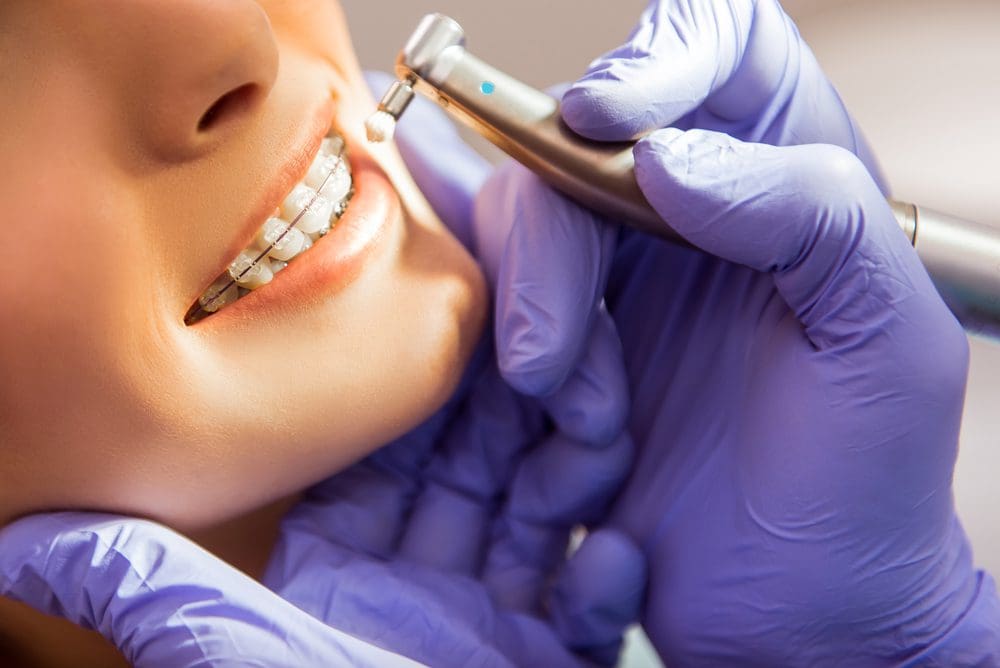Comprehensive Overview to Orthodontics Treatments for Remedying Oral Misalignments
In the world of orthodontics, the journey to attaining a completely aligned smile includes a myriad of procedures customized to remedy oral misalignments. From conventional dental braces to undetectable aligners and even surgical options, the field of orthodontics offers a variety of solutions to deal with differing levels of dental abnormalities. Understanding the details of each treatment, including their systems, benefits, and potential disadvantages, is crucial in making educated choices about one's orthodontic therapy. As we browse through the comprehensive overview to orthodontic procedures for dealing with dental misalignments, the complex information of each approach will certainly unfold, clarifying the course toward a harmonious and useful dental alignment.
Orthodontic Procedures Introduction

Routine changes and monitoring are essential parts of orthodontic therapy to make certain progress is on track and to make any required adjustments along the method. By undertaking orthodontic treatments, people can not just attain a straighter grin but also improve their general oral health and wellness and function.
Standard Braces: Exactly How They Work
When taking into consideration orthodontic treatments for dental imbalances, conventional braces attract attention as a tried and true method for dealing with teeth positioning. Traditional dental braces consist of braces, cables, and bands that collaborate to use constant pressure on the teeth, slowly moving them right into the desired positioning. The brackets are connected to the teeth using an unique adhesive, and the wires are threaded via the brackets. By readjusting the tension of the cables, orthodontists can regulate the direction and pressure related to each tooth, directing them right into proper placement in time.
As stress is used to the teeth via the dental braces, the bone bordering the teeth is improved to sustain the brand-new tooth placements. Patients will require regular adjustments at the orthodontist's workplace to ensure the braces proceed to use the proper stress for reliable teeth activity.
Unseen Aligners: Benefits And Drawbacks
These clear, personalized trays are virtually unseen when used, making them an appealing alternative for individuals looking for an extra visually pleasing orthodontic treatment. People can eliminate the aligners before consuming or brushing their teeth, lowering the danger of food obtaining stuck in the home appliance and simplifying the cleansing procedure.

Surgical Orthodontic Options
Surgical treatments in orthodontics existing feasible alternatives for resolving intricate oral imbalances that might not be properly settled via standard orthodontic therapies. While unseen aligners and conventional braces can deal with several orthodontic concerns, specific instances call for surgical treatment to achieve ideal outcomes. Surgical orthodontic choices are normally advised for serious malocclusions, substantial jaw discrepancies, and situations where the underlying bone framework requires modification to discover this info here accomplish correct positioning.
One usual medical orthodontic procedure is orthognathic surgical procedure, which entails rearranging the jaws to fix functional concerns such as problem speaking or chewing. This surgical procedure is typically carried out in cooperation with an orthodontist that helps straighten the teeth before and after the treatment. Surgical orthodontics might also entail procedures to reveal affected teeth, get rid of excess gum cells, or reshape the jawbone to create a much more harmonious face account.
Before considering medical orthodontic options, individuals undergo a thorough assessment to establish the requirement and possible benefits of such treatments. orthodontics. While surgical treatment might seem overwhelming, it can substantially boost both the function and appearances of the smile in cases where traditional orthodontic therapies fail
Retainers and Post-Treatment Care

Post-treatment care includes following the orthodontist's root canal dentist near me instructions faithfully. This may consist of correct oral hygiene practices, going to follow-up consultations, and putting on the retainers as prescribed. Failure to abide by post-treatment care directions can cause regression, where the teeth progressively move back towards their original positions. Consistent retainer wear, great oral hygiene, and routine dental examinations are necessary for keeping the outcomes attained via orthodontic surgical procedure and ensuring the long-term security of the corrected dental alignment.
Final Thought
In final thought, orthodontic treatments provide numerous choices for dealing with dental imbalances. Surgical orthodontic options are readily available for much more extreme misalignments. On the whole, orthodontic procedures can successfully improve dental wellness and aesthetic look.
As we browse through the thorough guide to orthodontic procedures for dealing with dental imbalances, the detailed details of each technique will certainly unfold, dropping light on the course toward a harmonious and useful oral placement. - orthodontist
One of the most typical orthodontic therapies is the usage of braces, which consist of metal braces and cables that use gentle pressure to slowly change teeth right into the desired position.When thinking about orthodontic therapies for oral imbalances, traditional braces stand out as a tried and true approach for dealing with teeth positioning. Additionally, unnoticeable aligners may not be suitable for complicated orthodontic problems that need even more substantial teeth activity, as they are typically recommended for mild to moderate cases. Retainers are customized orthodontic gadgets developed to hold teeth in their remedied settings after the completion of orthodontic treatment.